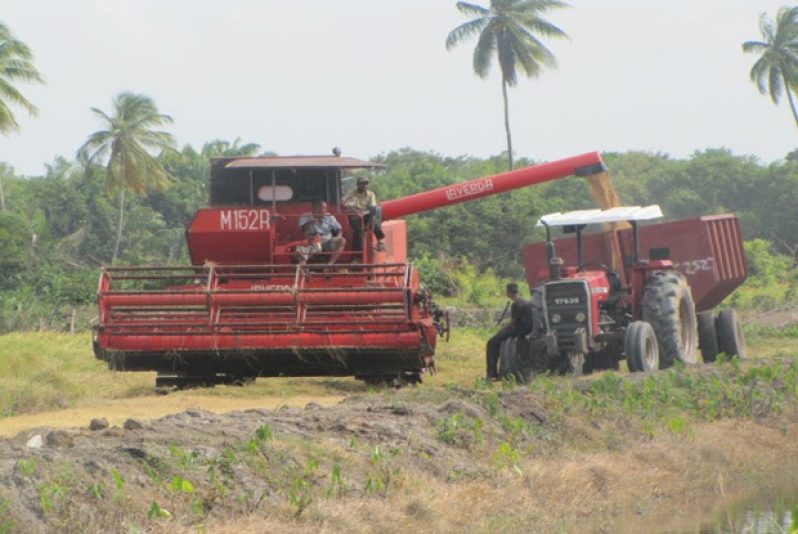THE star performer in agriculture was clearly the rice industry in 2013, having scored a record-breaking production level, achieving the equivalent of more than 535,000 tonnes, a 27 percent increase over the 2012 figure of 423,000 tonnes.Production per regions were; Region 2 – 99,062 metric tonnesmt, Region 3 – 56,360mt, Region 4 – 24,972mt, Region 5 – 207,509mt and Region 6-147,652mt. Again Region 5 is the highest producing region.
This was the first time ever that a Caribbean country recorded more than 500,000 tonnes of rice in a calendar year. This also made Guyana one of the larger producers of rice in the Americas.
More than 200,000 acres of land was under cultivation in 2013, making it also the first time cultivation acreage exceeded 200,000. Yield overall was five tonnes per hectare, again for the first time in Guyana’s history. In 2010, the yield was about four tonnes per hectare and in the late 1980s and early 1990s, yield was between two and three tonnes per hectare.
The success of the industry is an acknowledgment of the enthusiastic participation of the farmers of Guyana, both small and large. They persevered under difficult weather conditions, and learnt to work with climate change to successfully improve their yield and production. In 2013, farmers confronted the challenge of a drought and paddy bug infestation during the first crop and heavy rainfall in the second.
Farmers invested in improving the capacity in the industry by procuring more than 1,000 tractors and 90 combines during the year. Millers continued their investment by building mills, and increasing drying and storage capacity for paddy. In 2013, the drying capacity across the country increased by 2,269mt per day, whilst storage capacity being increased by 27,678mt. Region 6, the region most deficient in storage capacity, accounted for 16,965mt of this increase in storage, whilst significant investment were also made in Regions 2 and 5.
Guyana’s rice export for 2013 amounted to about 395,000 tonnes. Approximately 58 percent of the rice was exported to Venezuela with other significant buyers being Europe, Jamaica, Trinidad and Tobago and other Caribbean countries.
The Government’s support to the industry was strong in 2013. When farmers faced high prices for urea, an important commodity in their fertilizer regime for the crop production, Government invested approximately $400M to procure urea from Venezuela and worked in collaboration with the Rice Producers Association (RPA), and made it available to the farmers at about $5,000 per bag. As the first crop advanced, farmers were being charged between $7,000 and $10,000 for a 48kg bag of urea. Such an intervention saved farmers more than $300M per crop.
In addition, Government also made other inputs into the industry to provide support to farmers. These included the supply of an insecticide to farmers to combat the high levels of paddy bug, VAT exemption to farmers for tractors and spares, and investment in drainage and irrigation infrastructure, among others. (GINA)
Rice Industry – star of the agri sector in 2013
SHARE THIS ARTICLE :
Facebook
Twitter
WhatsApp



.jpg)









